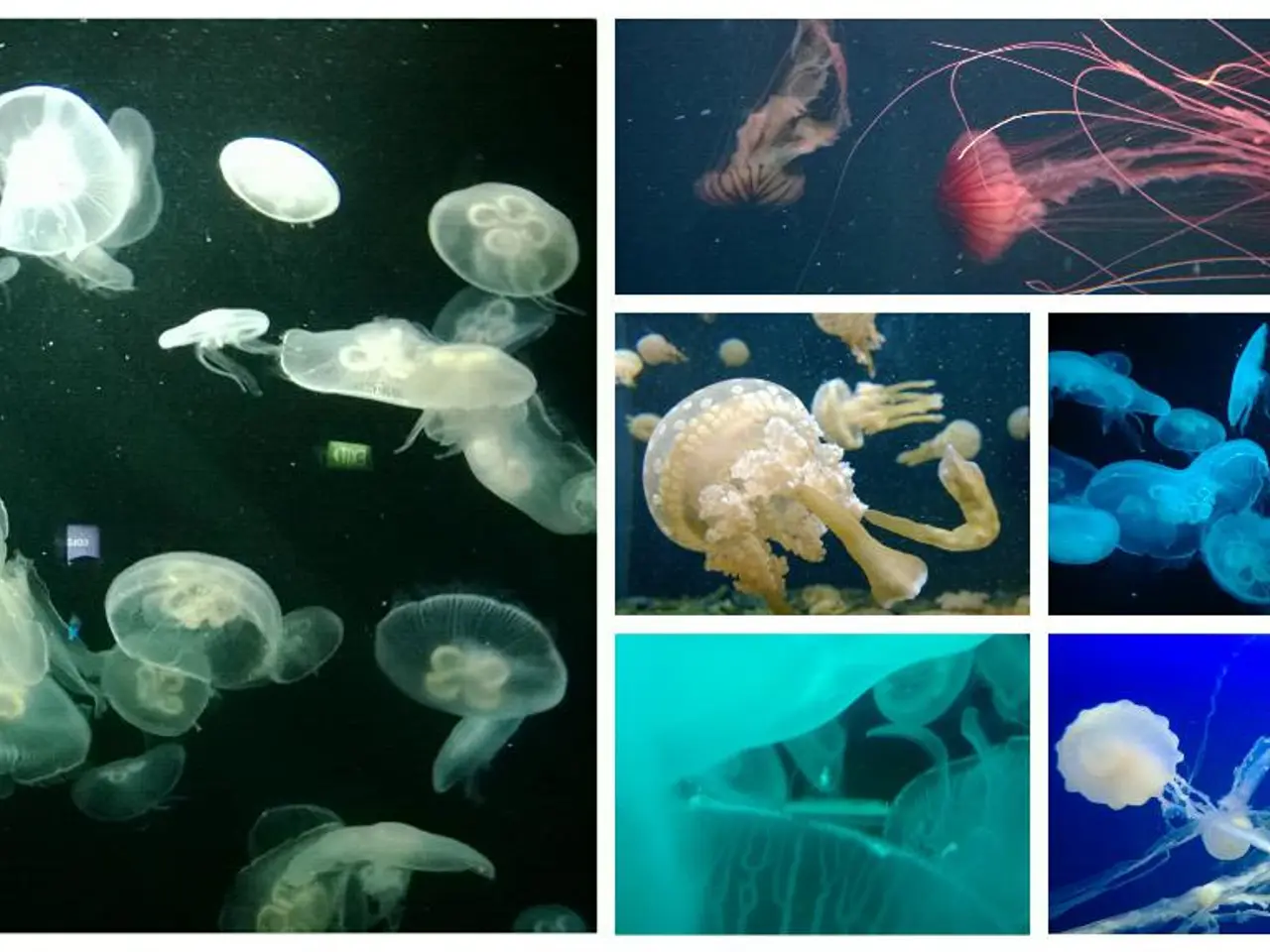Understanding the Accumulation of Keratin in Hair Follicles: Keratosis Pilaris Explained
Keratosis Pilaris, often referred to as 'chicken skin', is a common skin condition that affects children and young adults, with an estimated prevalence of 50-70%. This condition is caused by an excess production of keratin, a natural protein, which blocks hair follicles and creates small, rough spots on the skin, usually appearing on the upper arms and thighs.
While KP is harmless, it may be associated with mild itchiness, redness, or dryness. Contrary to popular belief, KP is not linked to vitamin deficiency, and excessive vitamin supplements should be avoided.
The good news is that effective self-care tips for managing keratosis pilaris (KP) center on consistent exfoliation and deep hydration. Key strategies include:
- Gentle exfoliation with alpha hydroxy acids (AHAs) and beta hydroxy acids (BHAs) such as lactic acid, glycolic acid, and salicylic acid. These help remove dead skin cells and soften keratin buildup that clogs hair follicles. Options include topical lotions, chemical exfoliants, and body scrubs with ingredients like urea and pumice beads for physical exfoliation.
- Regular moisturizing to maintain skin hydration and barrier health, using ingredients such as glycerin, ceramides, and urea. Hydration helps reduce roughness and improve skin texture.
- Short, lukewarm showers instead of hot, prolonged ones, which can dry out skin and worsen KP.
- Use of a humidifier in dry environments to avoid skin dehydration.
- For inflammation or redness, short-term topical cortisone creams may help reduce irritation but should be used sparingly to prevent skin thinning.
In-office treatments like chemical peels and laser therapy exist but have limited proven efficacy for KP.
Regular use of emollients is essential to maintain skin hydration during winter, especially as KP may worsen during cold, dry air. Emollients help keep the skin soft and hydrated, and may help reduce the appearance of KP.
Lifestyle tips for managing KP include wearing breathable clothing, using gentle cleansers and exfoliators, avoiding hot showers, moisturising frequently, and using a humidifier during the winter months.
If keratosis pilaris is severe, painful, or not improving with home treatments, a doctor/dermatologist should be consulted. Prescription options for KP may include topical or retinoid creams.
Keratin is a natural protein found in the body and is essential for the health of your skin, hair, and nails. It is important to note that KP is believed to be hereditary, with a 1 in 2 chance of being passed on if one parent is affected.
In conclusion, while there is no cure for Keratosis Pilaris, consistent skincare can help reduce its appearance and manage the condition effectively.
- Maintaining good health and wellness might involve incorporating skincare routines to manage conditions like keratosis pilaris (KP), a common skin condition, where regular exfoliation with alpha hydroxy acids (AHAs) and beta hydroxy acids (BHAs) is essential.
- Skin-care products containing glycerin, ceramides, and urea can be beneficial in helping to maintain skin hydration and improve the texture of KP-affected skin.
- It is important to understand that Keratin, a natural protein in the body, is crucial for the health of your skin, hair, and nails, but excessive build-up of keratin can cause KP, which is believed to be hereditary.




